With the recent spell of harsh wet weather putting a halt to harvesting, the sowing of catch crops is now in the back of many farmers’ heads. Those who were lucky enough to get ripe crops harvested before the weather broke have already made a start on sowing oilseed rape and catch crops into cleared stubble. Early planting makes the best use of autumn growth, therefore helping maximise the crop’s growth potential. Early establishment also helps reduce pigeon damage in brassicas.
The purpose
In recent years, catch crops have grown in popularity through promotion from environmental schemes and greening requirements. As well as this, catch crops can provide a good solution where there may be a scarcity of fodder. For instance, in 2018 catch crops such as Westerwolds ryegrass and fodder rape proved very popular.
However, for many tillage farmers, the main reason for establishing catch crops is because they work as a nutrient absorber (that is the basis of their name), holding valuable nutrients and providing a good soil cover for the winter. Once fully grown, catch crops are often incorporated back into the soil through cultivation to help build up organic matter levels and release more nutrients over time. Earthworm activity is also increased as result. Catch crops can also help to reduce compaction and erosion from harsh winter weather.

There is no right or wrong method for sowing catch crops. It comes down to the type of soil on the farm and what options are on hand on the farm.
Other benefits depend on the species of crop sown in a mixture. Plants that are deep-rooting, such as tillage radish, help to condition soil while other species such as legumes help to fix nitrogen from the atmosphere. The goals are to make these important nutrients more widely available, improve soil structure over time and provide better overall growing conditions for the following crops.
With the clock ticking, farmers who haven’t done so need to get catch crops into the ground as soon as the workload/weather permits.
Late sowing will result in poorer germination, and maybe even result in some seeds germinating next spring, causing an unwanted weed in the spring crop. But an even bigger impact will be reduced growth so the crops will generate less overall benefit.
Remember, at the end of the day, establishment costs should be kept to a minimum.
Establishment methods
The five main establishment methods for catch crops are disc cultivation and seeding, cultivation and drilling, tine cultivation and seeding, direct-drilling and broadcasting into disced or uncultivated stubbles with light cultivation afterwards to help germination.
There is no right or wrong method. It comes down to the type of soil on the farm, how it has been treated in the past, what establishment options are on hand and how much time is available.
One thing to bear in mind is that some seeders are designed to either handle small seeds or large seeds, but they may not be capable of handling both. Usually, the seeding rate per hectare will be much lower with catch crops, so ensure that the drill or seeder can accommodate the target application rate. This is one reason why air seeders prove popular, as they are well suited to small seed sizes and low seed rates.
Disc and broadcast seeder

A disc cultivator and air seeder proves to be one of the most popular methods.
This method is probably the most popular on Irish farms. The majority of Irish contractors and tillage farmers have a set of discs of some sort in the yard.
Machines such as the Amazone Catros, Pöttinger Terradisc and Tegosem, Lemken Rubin, and Kverneland Qualidisc are popular examples.
Any disc cultivators married with a spinner or an air seeder, such as an APV, a Doyle seeder or an Einbock unit, would prove suitable. These units can be retrofitted to most disc harrows.
A good-quality retrofit seeder kit including ground drive wheel, distribution hoses, etc, will set you back in the region of €3,500 plus VAT.
The seedbed can then be rolled after this method for consolidation purposes, to increase contact between soil and seed.
This method is relatively cheaper than some of the other methods.
Advisory note: this is a versatile establishment option with generally good results. Be careful of very dry conditions. Keep the cultivation as shallow as possible. High weed numbers are likely following the cultivation, so it is worth considering a quick stale seedbed before a second cultivation and planting, if time allows. Cultivation and disc-drilling

Disc-drilling catch crops leaves for good crop establishment but tends to be one of the more expensive methods.
Initial cultivation can be done with any form of min-till or stubble cultivator to create a seedbed and this is followed by a standard seed drill. Some may opt to use the combination of cultivation and drilling in a single pass using a cultivator drill.
Many farmers and contractors use both a disc drill or a cultivator drill on cultivated soil to establish commercial crops. These drills often consist of a disc arrangement up front to help bury trash and leave the seedbed with a finer degree of tilth.
The disc coulter arrangement then follows, slitting the loose ground using discs, then placing the seed below the surface using pneumatics to put it there.
All the major brands such as Lemken, Pöttinger, Kuhn, Amazone and Kverneland, naming just a few, offer a number of models and configurations to suit the customer.
Rolling is advised afterwards for good soil seed contact and to retain seedbed moisture. Some drills are fitted with rear packing rollers for consolidation purposes and this may remove the need to roll afterwards with a ring roller. This method is up there with the more expensive options.
Advisory note: this method will produce a better seedbed which can be more satisfactory where a combination of small and large seeds are to be sown, but planting depth will have to be a compromise.Tine cultivation for planting

A simple tine drill fitted with a broadcast or air seeder is a cost-effective solution for catch crop sowing. \ Philip Doyle
The Irish market is full of tine harrows, many of which are very flexible and can be equipped with multiple add-on features. This can make them suitable for various applications such as pasture rejuvenation or sowing catch crops.
Typically, they comprise one to three rows of spring tines, in addition to spring-mounted levelling plates. These can tear the stubble, helping to produce a seedbed before seed is broadcast or sown via an air seeder in between the rows of tines. The row of tines behind where the seed is dropped helps to cover the seeds with a layer of tilth.
These harrows are typically rear-mounted, but can be configured to fit on to the front of a tractor, if required. They can be very simple or very sophisticated. They are often fitted with spinner broadcasters or air seeders and these combine to be a low-cost establishment method. Some of the brands out there include Palatine, Güttler, APV and Einbock.
Advisory note: in many ways this option is quite similar in concept to the disc and broadcast seeder. Because the soil is loosened, there is the possibility of a significant weed problem in the crop.
The same loosening can also give rise to significant moisture loss in a dry season, so the roller needs to follow immediately after sowing. In most years, it is advisable to keep the first cultivation and the seeding as close as possible together to conserve moisture.

Direct-drilling is one of the best low disturbance solutions, although it is costly and soil must be in good physical order.
Direct drilling is a very suitable method of establishing catch crops in a low soil disturbance situation. It can also be fast as there is no cultivation required before planting. These drills simply cut into the stubble ground and place the seed below the surface – the lack of disturbance is one of the best ways of retaining moisture in years when that matters.
There are a number of no-till farmers throughout the country whose main planting drills are units such as the John Deere 750A, or the Weaving GD drill to plant their commercial crops and these drills are also used for, and very suitable for, planting catch crops.
There are also contractors using machines such as an Erth Agriseeder that can do the same job. However, this method may be among the most expensive options.
Advisory note: performance from this type of drill will be better when the land is level to start with. It is also likely to give best results on land that is in good physical and structural condition. This is important as it enables the opened slits to crumble and close back in around the sown seeds. The lack of soil disturbance may help decrease the weed burden in the catch crop, but It may also slow growth post-establishment where there is no natural mineralisation to release nutrients in the soil.

Directly broadcasting seed is another low cost option, however it will result in the lowest establishment rates.
A number of different methods can fall under this heading. Seed can be broadcast on to disced ground and rolled afterwards.
Seed can also be broadcast directly on to stubble ground with a spinner mounted on a tractor’s front linkage followed by a light cultivator or a ring roller. Alternatively, seed can be spread with a fertiliser spreader and then followed by a roller or light cultivator. This is the cheapest method available but, in most cases, it will offer the lowest level of seed establishment.
Advisory note: establishment from this method can be quite hit-and-miss depending on weather. It has a better chance of being successful where the soil has good structure and is naturally friable. In general, systems that use less cultivation provide less nutrients from the soil and can produce less crop growth in the absence of fertilisation.
With the recent spell of harsh wet weather putting a halt to harvesting, the sowing of catch crops is now in the back of many farmers’ heads. Those who were lucky enough to get ripe crops harvested before the weather broke have already made a start on sowing oilseed rape and catch crops into cleared stubble. Early planting makes the best use of autumn growth, therefore helping maximise the crop’s growth potential. Early establishment also helps reduce pigeon damage in brassicas.
The purpose
In recent years, catch crops have grown in popularity through promotion from environmental schemes and greening requirements. As well as this, catch crops can provide a good solution where there may be a scarcity of fodder. For instance, in 2018 catch crops such as Westerwolds ryegrass and fodder rape proved very popular.
However, for many tillage farmers, the main reason for establishing catch crops is because they work as a nutrient absorber (that is the basis of their name), holding valuable nutrients and providing a good soil cover for the winter. Once fully grown, catch crops are often incorporated back into the soil through cultivation to help build up organic matter levels and release more nutrients over time. Earthworm activity is also increased as result. Catch crops can also help to reduce compaction and erosion from harsh winter weather.

There is no right or wrong method for sowing catch crops. It comes down to the type of soil on the farm and what options are on hand on the farm.
Other benefits depend on the species of crop sown in a mixture. Plants that are deep-rooting, such as tillage radish, help to condition soil while other species such as legumes help to fix nitrogen from the atmosphere. The goals are to make these important nutrients more widely available, improve soil structure over time and provide better overall growing conditions for the following crops.
With the clock ticking, farmers who haven’t done so need to get catch crops into the ground as soon as the workload/weather permits.
Late sowing will result in poorer germination, and maybe even result in some seeds germinating next spring, causing an unwanted weed in the spring crop. But an even bigger impact will be reduced growth so the crops will generate less overall benefit.
Remember, at the end of the day, establishment costs should be kept to a minimum.
Establishment methods
The five main establishment methods for catch crops are disc cultivation and seeding, cultivation and drilling, tine cultivation and seeding, direct-drilling and broadcasting into disced or uncultivated stubbles with light cultivation afterwards to help germination.
There is no right or wrong method. It comes down to the type of soil on the farm, how it has been treated in the past, what establishment options are on hand and how much time is available.
One thing to bear in mind is that some seeders are designed to either handle small seeds or large seeds, but they may not be capable of handling both. Usually, the seeding rate per hectare will be much lower with catch crops, so ensure that the drill or seeder can accommodate the target application rate. This is one reason why air seeders prove popular, as they are well suited to small seed sizes and low seed rates.
Disc and broadcast seeder

A disc cultivator and air seeder proves to be one of the most popular methods.
This method is probably the most popular on Irish farms. The majority of Irish contractors and tillage farmers have a set of discs of some sort in the yard.
Machines such as the Amazone Catros, Pöttinger Terradisc and Tegosem, Lemken Rubin, and Kverneland Qualidisc are popular examples.
Any disc cultivators married with a spinner or an air seeder, such as an APV, a Doyle seeder or an Einbock unit, would prove suitable. These units can be retrofitted to most disc harrows.
A good-quality retrofit seeder kit including ground drive wheel, distribution hoses, etc, will set you back in the region of €3,500 plus VAT.
The seedbed can then be rolled after this method for consolidation purposes, to increase contact between soil and seed.
This method is relatively cheaper than some of the other methods.
Advisory note: this is a versatile establishment option with generally good results. Be careful of very dry conditions. Keep the cultivation as shallow as possible. High weed numbers are likely following the cultivation, so it is worth considering a quick stale seedbed before a second cultivation and planting, if time allows. Cultivation and disc-drilling

Disc-drilling catch crops leaves for good crop establishment but tends to be one of the more expensive methods.
Initial cultivation can be done with any form of min-till or stubble cultivator to create a seedbed and this is followed by a standard seed drill. Some may opt to use the combination of cultivation and drilling in a single pass using a cultivator drill.
Many farmers and contractors use both a disc drill or a cultivator drill on cultivated soil to establish commercial crops. These drills often consist of a disc arrangement up front to help bury trash and leave the seedbed with a finer degree of tilth.
The disc coulter arrangement then follows, slitting the loose ground using discs, then placing the seed below the surface using pneumatics to put it there.
All the major brands such as Lemken, Pöttinger, Kuhn, Amazone and Kverneland, naming just a few, offer a number of models and configurations to suit the customer.
Rolling is advised afterwards for good soil seed contact and to retain seedbed moisture. Some drills are fitted with rear packing rollers for consolidation purposes and this may remove the need to roll afterwards with a ring roller. This method is up there with the more expensive options.
Advisory note: this method will produce a better seedbed which can be more satisfactory where a combination of small and large seeds are to be sown, but planting depth will have to be a compromise.Tine cultivation for planting

A simple tine drill fitted with a broadcast or air seeder is a cost-effective solution for catch crop sowing. \ Philip Doyle
The Irish market is full of tine harrows, many of which are very flexible and can be equipped with multiple add-on features. This can make them suitable for various applications such as pasture rejuvenation or sowing catch crops.
Typically, they comprise one to three rows of spring tines, in addition to spring-mounted levelling plates. These can tear the stubble, helping to produce a seedbed before seed is broadcast or sown via an air seeder in between the rows of tines. The row of tines behind where the seed is dropped helps to cover the seeds with a layer of tilth.
These harrows are typically rear-mounted, but can be configured to fit on to the front of a tractor, if required. They can be very simple or very sophisticated. They are often fitted with spinner broadcasters or air seeders and these combine to be a low-cost establishment method. Some of the brands out there include Palatine, Güttler, APV and Einbock.
Advisory note: in many ways this option is quite similar in concept to the disc and broadcast seeder. Because the soil is loosened, there is the possibility of a significant weed problem in the crop.
The same loosening can also give rise to significant moisture loss in a dry season, so the roller needs to follow immediately after sowing. In most years, it is advisable to keep the first cultivation and the seeding as close as possible together to conserve moisture.

Direct-drilling is one of the best low disturbance solutions, although it is costly and soil must be in good physical order.
Direct drilling is a very suitable method of establishing catch crops in a low soil disturbance situation. It can also be fast as there is no cultivation required before planting. These drills simply cut into the stubble ground and place the seed below the surface – the lack of disturbance is one of the best ways of retaining moisture in years when that matters.
There are a number of no-till farmers throughout the country whose main planting drills are units such as the John Deere 750A, or the Weaving GD drill to plant their commercial crops and these drills are also used for, and very suitable for, planting catch crops.
There are also contractors using machines such as an Erth Agriseeder that can do the same job. However, this method may be among the most expensive options.
Advisory note: performance from this type of drill will be better when the land is level to start with. It is also likely to give best results on land that is in good physical and structural condition. This is important as it enables the opened slits to crumble and close back in around the sown seeds. The lack of soil disturbance may help decrease the weed burden in the catch crop, but It may also slow growth post-establishment where there is no natural mineralisation to release nutrients in the soil.

Directly broadcasting seed is another low cost option, however it will result in the lowest establishment rates.
A number of different methods can fall under this heading. Seed can be broadcast on to disced ground and rolled afterwards.
Seed can also be broadcast directly on to stubble ground with a spinner mounted on a tractor’s front linkage followed by a light cultivator or a ring roller. Alternatively, seed can be spread with a fertiliser spreader and then followed by a roller or light cultivator. This is the cheapest method available but, in most cases, it will offer the lowest level of seed establishment.
Advisory note: establishment from this method can be quite hit-and-miss depending on weather. It has a better chance of being successful where the soil has good structure and is naturally friable. In general, systems that use less cultivation provide less nutrients from the soil and can produce less crop growth in the absence of fertilisation. 









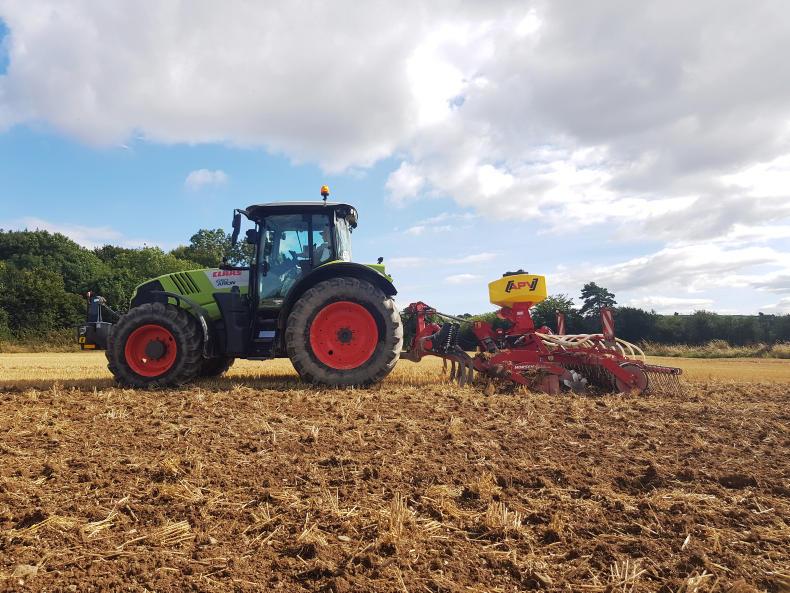
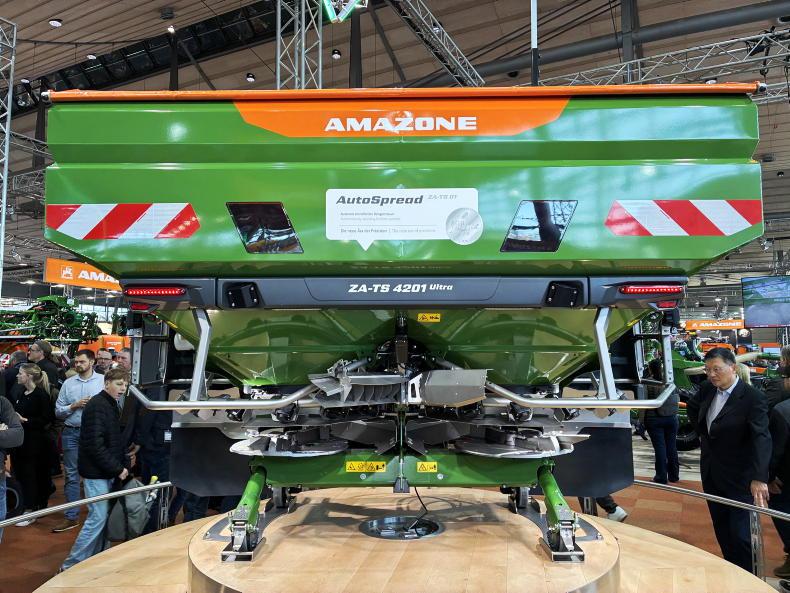

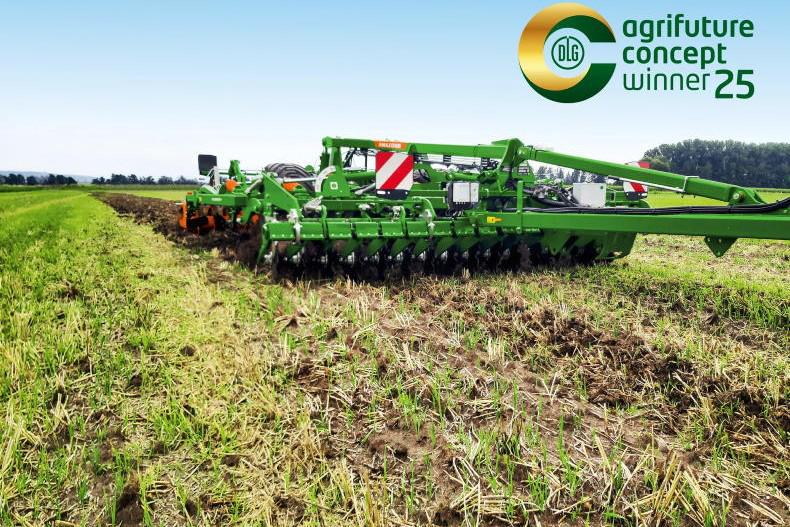
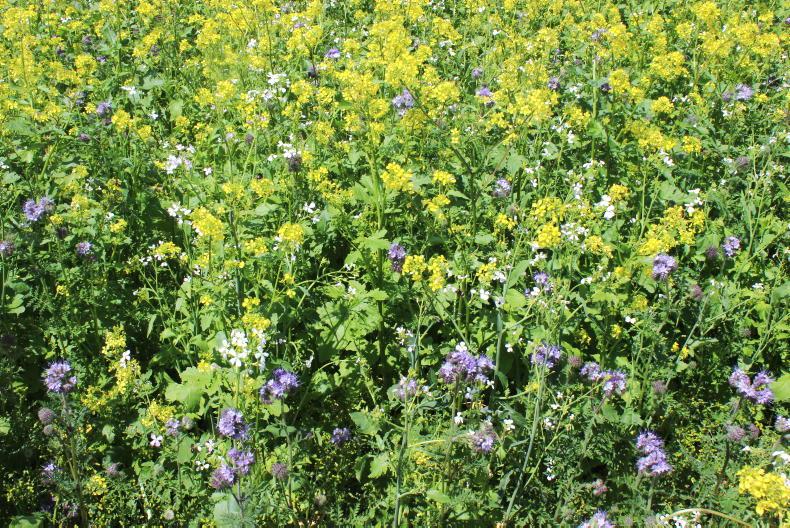
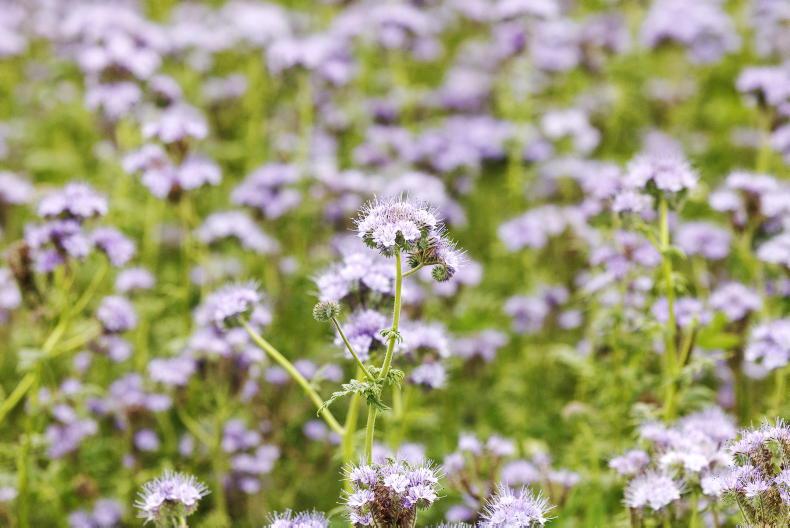
SHARING OPTIONS